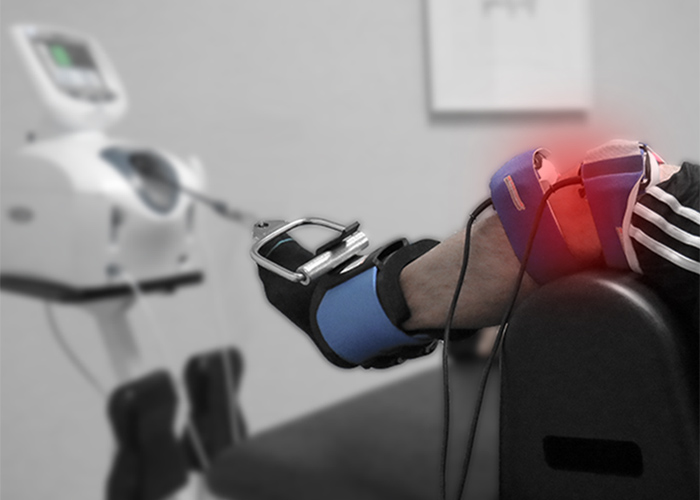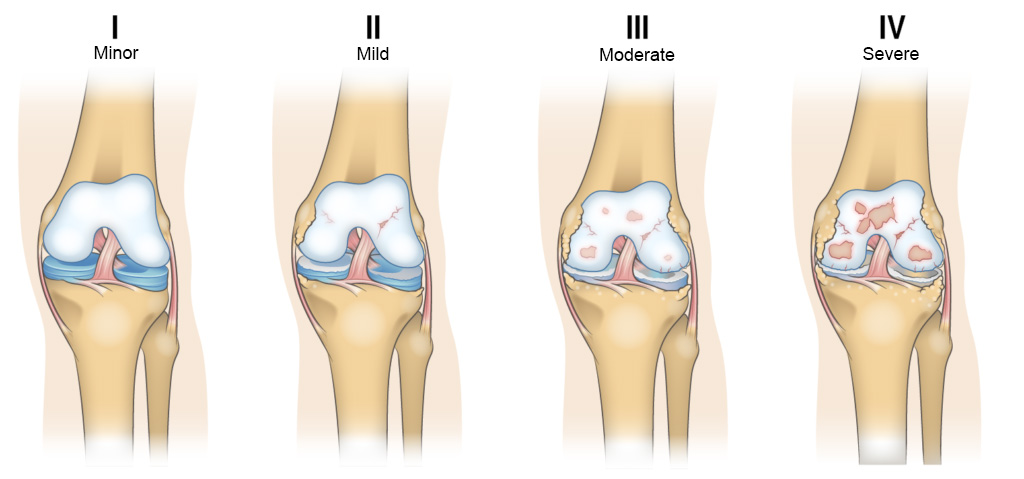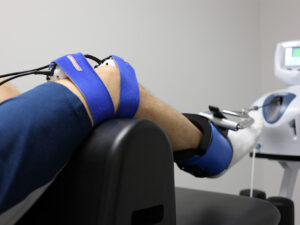What is Osteoarthritis?
Osteoarthritis is the most common form of joint arthritis, which often affects the knees, hips, and hands. In the early stages of osteoarthritis (OA), a person may not notice any symptoms; however, they may experience mobility issues or need surgery as the condition progresses.
Osteoarthritis of the knee affects joint functionality. As the cartilage and the lining of the joints break down, they no longer protect the bones of the knee joint, leading to bone damage, pain, and stiffness as knee OA progresses.
According to the Center for Disease Control and Prevention, 1 in 2 people is likely to develop knee osteoarthritis in their lifetime, with the number gradually rising, leading to a significant impact on a patient’s health, career, and overall happiness.
Diagnosing Osteoarthritis
Diagnosing knee OA pain is easy when addressing common symptoms and running diagnostics. However, sometimes symptoms are worse than what is showing on the x-ray, so be sure to address any symptoms and pain with your doctor no matter what the x-ray may initially say.
Osteoarthritis symptoms include:
-
- Knee pain that increases when active but gets better with rest
- Swelling of joint
- Feeling of warmth around the joint
- Knee stiffness when sitting or laying down for long periods
- Decrease in joint mobility. Difficult to walk, use stairs, and sit
- Popping and cracking sounds when moving after periods of rest
Stages
OA of the knee takes many years to develop. Therefore, doctors often use stages to describe the progression of knee osteoarthritis, starting at stage 0 for a healthy knee progressing to stage 4 for severe OA.
Here is a look at the knee osteoarthritis stages ranging from normal, minor, mild, moderate, and severe, with appropriate treatments below.
Stage 0: Normal
The knee shows no signs of OA, which indicates normal knee health with no known impairment or signs of joint damage.
TREATMENT:
There is no treatment needed for stage 0 of knee OA.
Stage 1: Minor
During stage 1 of knee osteoarthritis, patients develop minor wear and tear of joints and possible bone spurs called osteophytes. However, pain or discomfort is unlikely.
TREATMENT:
At this stage, treatment is not necessary. If you are predisposed to osteoarthritis, an orthopedic physician may recommend special treatment for stage 1, such as supplements or changes in lifestyle to prevent the progression of OA.
Stage 2: Mild
In stage 2 of OA, x-rays of knee joints will show bone spur growth. Though on an x-ray, the space between the joints may appear normal, or there is only a slight narrowing of the space in the joint, you may begin experiencing a varying intensity of joint pain symptoms.
The area around your knee joints can feel stiff or uncomfortable, especially after sitting or laying for an extended period or even after working out.
TREATMENT:
This is still an early stage of OA. At this stage, it is easier to follow a plan to stop the further progression of knee osteoarthritis. There are many different therapies to help relieve pain and discomfort during this mild stage. Your physical therapist may recommend a strict regimen of strength training and exercise for increased joint stability. Braces, shoe inserts, and knee supports can protect the knee from stress and prevent further OA progression.
Stage 3: Moderate
Stage 3 of OA is considered moderate. There is noticeable erosion to the cartilage surface between the bones. As knee osteoarthritis progresses, the cartilage will continue to thin and break down. The bones will respond by thickening and forming outward bony growths. In addition, bones develop spurs on the affected joint, making it rougher. During the progression, there is obvious joint inflammation and weakening of knee cartilage. The patient will feel discomfort and pain when walking, running, squatting, or kneeling.
Accompanied with the joint stiffness from stage 3, when sitting or laying down too long, there may be a snapping or popping sound when first moving.
TREATMENT:
Over-the-counter pain relievers or NSAIDs are commonly prescribed treatments for knee osteoarthritis. However, if these methods are ineffective once the pain has become too severe, an orthopedic doctor may prescribe stronger pain medicine, such as oxycodone or codeine.
If you do not respond positively to physical therapy or pain relievers, your doctor may require an intraarticular injection of hyaluronic acid or cortisone injections into the knee joint. You can aggressively treat stage 3 of OA with three to five hyaluronic acid injections over a three to five week period. It can take several weeks for the treatment to start showing results; the results can last around six months.
Another option is laser knee decompression with the Axis Knee Program. It’s a painless and safe treatment that creates a pull on your knee and opens up joint space. The pull creates a negative pressure in your joint that draws in water and nutrients to lubricate and nourish your knee. Simultaneously, a therapeutic laser is penetrated deep into the knee joint for effective healing, pain relief, and inflammation reduction.
Stage 4: Severe
Considered severe, in stage 4, the space between the joint and bone is reduced considerably. This causes the cartilage to wear down and leaves the joint very stiff. The cartilage breakdown leads to a chronic inflammatory response which causes friction and intense osteoarthritis discomfort and pain when moving the joint or walking.
This stage produces a significant development of bone spurs accompanied by increased pain and discomfort. As a result, everyday activities, including simple movements, are severely affected and considered a challenge.
TREATMENT:
With severe osteoarthritis, one option is performing osteotomy or a bone realignment surgical treatment. The orthopedic surgeon cuts the bone of the knee to help realign it to provide less stress to the joint cartilage. This procedure helps protect the knee by shifting the weight of the body away from the bone spur growth and bone damage.
Another option is total arthroplasty, also known as a total knee replacement. During surgery, the damaged joint is removed and replaced with a metal or plastic prosthesis device. Recovery can take several weeks and requires continuous physical and occupational therapy to regain full mobility.
If you suffer from osteoarthritis of the knee and want to avoid surgical intervention, the Axis Knee Program was made for you! Runway Health created this program by combining years of experience and evidence-based research to help patients suffering from chronic moderate to severe knee pain.
The Axis Knee Program is specifically designed for conditions including knee arthritis, degenerative knees, meniscus tearing, and cartilage thinning.
Call or text (905) 209-2777 to book your appointment today!


